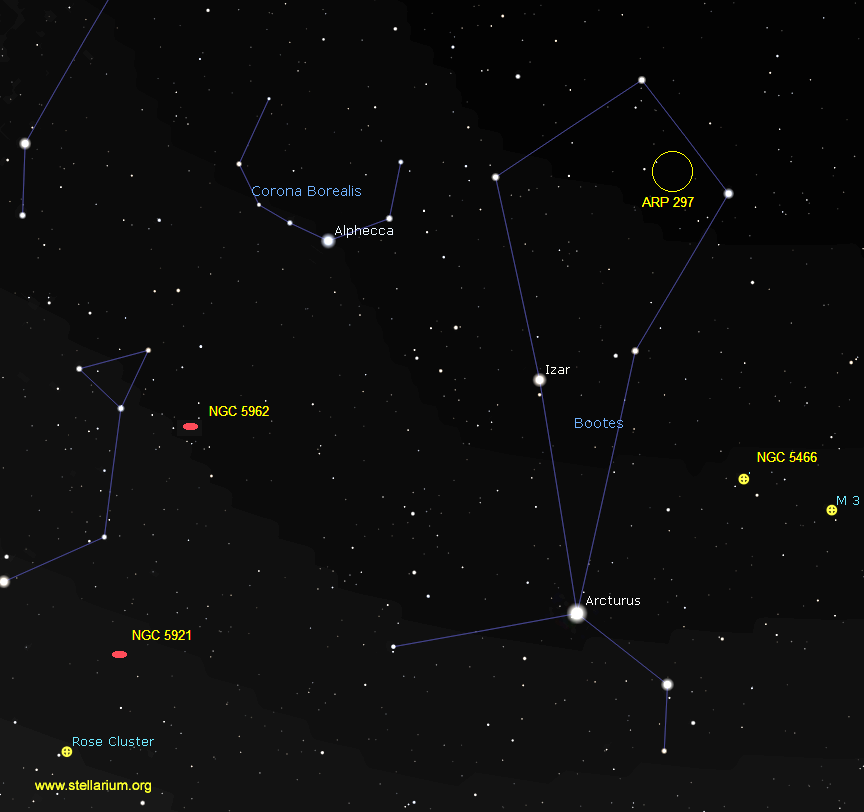Bootes And Serpens
This month the constellation Bootes is high in the sky and just past the meridian. Its prominent star called Arcturus is 37 light-years (ly) away and shines at zero magnitude. Simply follow the stars in the Big Dipper’s handle as it arcs down to Arcturus. This spectral class K0 supergiant shines 113 times brighter than our Sun measure 26 solar diameters across or one quarter the size of the orbit of Mercury.
Looking ten degrees north of Arcturus along the left side of the kite is the star Izar. Shining at second magnitude, this nice but difficult double star displays a pale yellow and light blue stars. They are separated by a mere 2.9 arc seconds thus requiring medium size optics to split. Independently these suns glow at magnitudes 2.7 and 5.1 respectively and are 209 ly away.
The only globular cluster within Bootes is NGC 5466. At 47,000 ly away, it is fairly dim and this magnitude 10.0 smudge will require at least a four-inch telescope to begin resolving it. Do not forget to move your scope to the globular cluster M3 that is officially located 34,000 ly away in Canes Venatici.
So who is up for a challenge? For those who are, we have Arp 297. This faint group of four galaxies consisting of NGC 5752 at 14th magnitude, NGC 5753 at 15th, NGC 5755 at 15th and the largest and brightest member NGC 5754 at magnitude 13.8. Arp galaxies are basically, faint peculiar objects. Some of these shapes and interactions are quite remarkable. The marker galaxy NGC 5754 is located a little east of the midpoint of the imaginary line between Nekkar and Seginus at the top of the kite.

Moving to Serpens, we find ourselves again in galaxy country. Starting from the head and NGC 5962, this 12th magnitude galaxy possesses many tight galactic arms and has a bright core. We then have the lovely globular cluster M5 – the Rose Cluster. At a distance of 25,000 light-years, this magnitude 6.6 fuzzy ball may contain as many as 500,000 stars. A little north of M5 is the 12th magnitude face-on galaxy NGC 5921.
The ringed planet Saturn will be at opposition on the 27th. It will rise at sunset and visible all night long. The planets Mars and Earth are still closing in on each other. Mars will be at its best on the last days of July but is already noticeably brightening. It rises at 1 a.m. local time and is magnitude -1.2 at the beginning of the month and will brighten to magnitude -2.2 on July 1 when it rises at 11 p.m. local time.
Summer solstice officially begins on June 21 at 10:27 UT. New moon (lunation 1181) occurs on the 15th and the Full Strawberry Moon occurs on June 28 at 4:53 UT.
Until next month, clear skies everyone.
Twitter: @astroeducator
